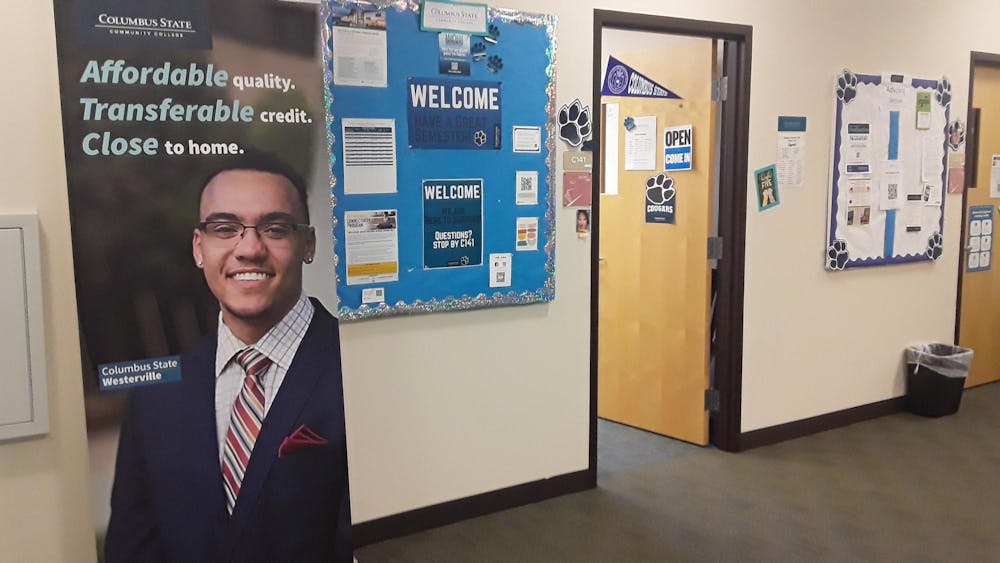Although community college can be a flexible and affordable way for students to pursue a degree, a recent study by the Community College Research Center, showed that across the nation, less than half the students who transfer to a four-year institution earned bachelor’s degrees. However, Otterbein’s partnership with community colleges may help more transfers succeed.
According to the study at Columbia University’s Teachers College on Feb. 7, the graduation rate of transfer students across the U.S. is 48%. This rate fluctuates by individual state: Ohio’s public and private institutions are both below the national rate at 45% and 43% respectively.
According to Jennifer Hicks, an admissions counselor for Otterbein’s adult and transfer students, students that transfer to Otterbein have programs that allow for additional help. Otterbein’s partnership with Columbus State Community College (CSCC) in its preferred pathways program includes eight other Ohio universities.
“Those pathway programs will spell out exactly what classes to take at Columbus State for the first two years and then what classes specifically to take at Otterbein for the last two years,” says Hicks. “I think by having students follow those pathway programs, it has helped students come over with more credit that applies directly towards their degree and allows them to finish a little bit faster than a student who may not have followed that pathway program.”
Pathway programs can help reduce credit loss, which costs time and money.
Further, students at community colleges like CSCC can earn an associate degree before they transfer to a four-year institution. At Otterbein, students who complete an associate degree at a community college with at least a 2.75 GPA are eligible for a $17,000 scholarship, while Otterbein’s traditional transfer scholarships range from $8,000 to $15,500.
However, despite the fact that 35 states have policies that guarantee transfer to students with an associate degree, they don’t guarantee success.
Besides having experience with college coursework, transfer students tend to be more diverse in terms of demographics, including age, race and income, in comparison to traditional first-year students.
Additionally, transfer students may have pre-existing obligations that compete with their education and ability to engage on campus.
“Being a transfer student, I'm not living [in] a dorm, like I have bills that I have to pay. So you know, I have a car...I have a job,” says Tasha’La Woodruff, a senior psychology transfer student. Woodruff says it's hard to get involved on campus and build relationships with students because of these responsibilities.
For Woodruff, one of her responsibilities is that of being a parent, on top of working part-time and attending school. However, she says that family support and financial support have been key factors in succeeding as a transfer student.
“For me as a returning student, I would definitely say one of the major things that I have run into time and time again, is lack of financial support,” says Woodruff. "And sometimes you do have to put your dreams on the back burner.”
While external factors, including financial means, employment and commuter status, can impact transfer students, their ability to integrate academically and socially also plays a role.
Coming to college can be a major transition for any student, but it can be particularly challenging for transfer students who come onto a new campus and enter into upper level classes without having existing rapport with faculty.
“I feel that I sort of had this feeling of being behind a lot, especially when it came to, like, professional development or the honors program altogether," says Celeste Nist, a senior psychology student who transferred from Columbus State. "I kind of felt behind just because I didn't have that familiarity with the professors or the department.”
While college orientations can help introduce students to peers, professors and campus culture, they may not entirely meet the needs of every transfer student.
“[Otterbein] did offer sort of a separate orientation for transfer students. But it really wasn't helpful,” says Nist. “To me personally...it seemed like it was more geared toward just first-time young college students, it really wasn't geared toward adult students who might be returning to college, or had just, you know, started later in life.”
Compared to other schools, Hicks says Otterbein has a more traditional on-campus, in-person style, and acknowledges that its adult student population tends to be younger and may subsequently have fewer outside obligations. Ages aside, Hicks says Otterbein tries to make transfer students aware of resources like the Center for Student Success and Career Development as well as the Academic Support Center.
For students like Woodruff, connecting with advisors and professors has been essential, but she says students must be proactive.
“There is plenty of help out there. But you have to ask and you have to look for it because it's not just going to land at your feet, it's not just going to come to you,” Woodruff said.
However, Woodruff also says it’s important to take things one step at a time.
“Anytime you have a goal, or anything you want to accomplish, just take it one step or one piece, one bite at a time. Don't feel like you have to eat the whole thing right then and there,” says Woodruff. “Sometimes you really don't know how much you can do until you start. And sometimes it just starts with one step.”








